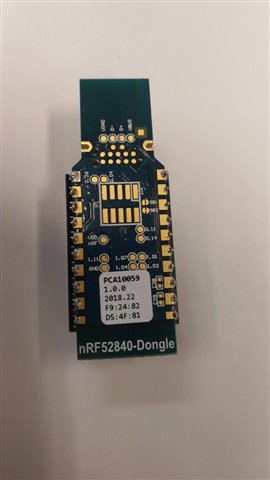Hi,
I'm trying send me the mac address of the device by UART by the following method:
void sendMacAddress(void){
uint8_t packet[6];
packet[0] = NRF_FICR->DEVICEADDR[0];
packet[1] = NRF_FICR->DEVICEADDR[0]>>8;
packet[2] = NRF_FICR->DEVICEADDR[0]>>16;
packet[3] = NRF_FICR->DEVICEADDR[0]>>24;
packet[4] = NRF_FICR->DEVICEADDR[1];
packet[5] = NRF_FICR->DEVICEADDR[1]>>8;
transmit_string_CR("Start",5);
for(int i=5; i>=0; --i){
char msg[2]={0};
itoa(packet[i],msg,16);
transmit_string_NCR(msg,2);
if(i!=0)transmit_string_NCR(":",1);
}
CR();
nrf_delay_ms(1000);
}
By serial I receive:
Start
b9:24:82:d5:4f:81
The problem its that the device which I receive is not the same that appears in the stick device, I attach photo:

Could anyone tell me that I'm do it correctly?
Best,
Jorge.

